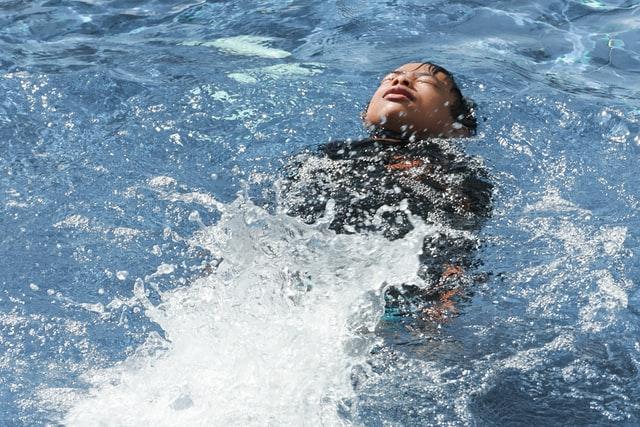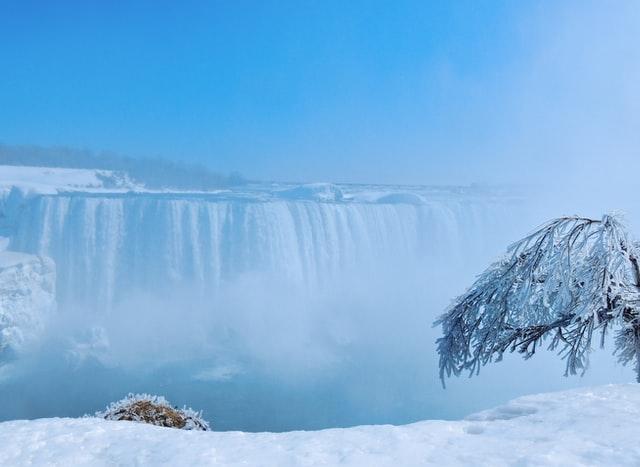Cold Water Shock: Everything Swimmers Need to Know About
With more and more swimmers choosing to try wild swimming in recent years there is a need for information about certain risks that should be taken into account. Knowing about these risks can mean the difference between enjoying your new adventure and having a terrible experience.
Whether you have been swimming in open water for a while or are just beginning, you should be aware of the average temperature of where you will be swimming. This can help prepare you for the potential for cold water shock.
Keep reading to learn everything you can about cold water shock.

What is Cold Water Shock?
Cold water shock is the body’s involuntary response to extremely cold water conditions usually experienced when entering a body of water rapidly. Whether the entry into the water is voluntary or not, the body is not equipped to handle the extremely cold water.
Because of this, your body typically experiences a sudden gasp for air which shortly translates to complete and total panic. When this happens, many people, especially those who are not experienced cold water swimmers, can panic and thus drown.
It is important to understand that cold water shock can happen to anyone, even the most experienced swimmers. Understanding what cold water shock is and how you can prevent it can mean the difference between surviving and not.
What Are the Stages of Cold Water Immersion?
Whether you have chosen to take a swim in the cold water or not, there is always the risk of health-related complications. This is because the human body is not designed to withstand extreme temperatures, especially those found in various bodies of water.
When you are immersed in cold water, willingly or not, you can experience various cold water shock stages that can cause more complications. What starts as a shock can lead to more complicated health conditions such as heart attack or death.
It is important to recognize the stages and certain symptoms of cold water shock before they happen. This is because knowing what to look for is half the battle of this sudden onset caused by cold water immersion.
Check out these stages of cold water immersion that you should look out for:
- Cold water shock happens within the first minute you are in the extremely cold water. The initial involuntary gasp of air often leads to rapid breathing or hyperventilation. If not controlled, things can go from bad to worse in a heartbeat.
- Cold Incapacitation occurs over the next 10 minutes and can prevent you from swimming to safety. This is because, during this stage, the body begins to lose feeling altogether, which can result in swim failure and drowning.
- Hypothermia typically sets in within 30 minutes of being in a cold body of water. If not rescued or if left untreated for a long period, can result in unconsciousness and then death.

What Happens to Your Body When You Experience Cold Water Shock?
There are several cold water shock symptoms that you should be aware of if you decide to start wild swimming. While some of the symptoms, if noticed in time, can be mild, others can lead to serious medical emergencies.
It is always recommended that you speak to your physician before you start any type of new exercise program, but especially before beginning cold water swimming. This is because if you have underlying medical conditions, the shock of the cold water could be detrimental to your health.
Check out some of the symptoms of cold water shock that you can expect to experience so you can be prepared:
- Sudden gasping for breath can be brought on by the shock of the cold water on your warm body. The gasp is typically so sudden that if you are not careful, you can stop breathing altogether.
- Rapid breathing typically occurs when the gasping begins and can also escalate your heart rate and cause you to hyperventilate.
- Increased heart rate happens as a result of the sudden immersion in the cold water which can cause you to panic. This panic sensation in turn brings your heart rate to an unhealthy level.
- Spike in blood pressure is usually caused by an increased heart rate and can lead to heart attack or sudden heart failure.
- Impaired cognitive skills are a common occurrence of cold water shock since panic and fear tend to take over and result in the inability to think clearly or move your body. This can result in drowning.
As you can see, there are many symptoms of cold water shock that you will likely experience when you begin cold water swimming. Even the most experienced swimmers tend to have some of these symptoms although they can work through them more easily than a beginner.
How do You Treat Cold Water Shock?
If you suspect that you suspect that someone you are swimming with is experiencing cold water shock, then you will need to try to find help right away. There are several things you can do for cold water shock treatment, you just have to figure out the best path.
The first and most important task is to gently remove them from the water preferably with another person or two. Getting them out of the cold water will prevent their body temperature from dropping any further.
You will then want to do everything you can to prevent the person from losing any more heat. This means grabbing blankets, towels, and a changing robe and covering them with it completely.
During this time, you should be sure that someone has called for medical professionals since they are trained to deal with any complications. Many experts say that it is a best practice that you get someone to call for emergency services before you even begin warming them up.
It is important to note that it is also important to find out if someone has training in how to recognize hypothermia symptoms. This way you can also have them monitored for this while EMS is on the way.
If you find yourself in this situation you should first of all attempt to stay calm as much as you are able. Preventing yourself from losing your mental capacity is the only way you are going to be able to get help if someone is not swimming with you.
Keep in mind that the ultimate goal when you are experiencing cold water shock is to attempt to get out of the water as soon as possible. Getting treatment as soon as possible is of the utmost importance.

How Can You Prevent Cold Water Shock?
Knowing what cold water shock is and how to treat it can help you if you have decided to take up the sport of open water swimming. While in most cases, you should be perfectly fine, It does not turn out best for everyone.
When you do find yourself in the cold water, whether voluntary or involuntary, there are specific things you can do to prevent cold water shock or at least lessen the symptoms. Most people who wild swim typically spend quite a bit of time practicing immersion before taking on the sea.
Here are some important tips that you should remember if you find yourself in a body of water that is extremely cold:
- The most important thing you should consider is knowing what your limits are before putting yourself in a situation where you could hurt yourself. Oftentimes people do not understand just how cold 15℉ can be.
- Give yourself a little time to acclimate to the water before you try to make any moves such as trying to swim. Many people make the mistake of trying to swim when they are experiencing the beginning of cold water shock.
- When you first enter the water either on purpose or unexpectedly, try to remember to flip over to your back and float. Doing this for just a few seconds can help your body relax enough to move past the shock.
- Whatever you do, stay calm. It is easy, and sometimes involuntary to begin to panic when cold water shock begins. Keeping yourself calm can prevent it from getting worse.
- If you are new to cold water swimming, you may want to consider wearing a floatation device, at least in the beginning. This can keep your head above water and prevent drowning during cold water shock.
- If you plan to go wild swimming, it is advised that you always check not only the weather conditions where you live but also where you plan to swim. Doing this can make you aware of water temperatures that may be too cold for you to venture out into.
Overall, whether you are a novice or an experienced outdoor swimmer, you need to understand not only the health benefits of the sport but also the risks involved. Understanding how to recognize the symptoms, treatment, and even precautions you can take will decrease the risk of going through cold water shock.
Link/Reference This Article
If you found the information in this article useful in your research, please link to use as the source using the tool below.
-
<a href="http://seatemperatures.net/blog/cold-water-shock-everything-swimmers-need-to-know-about/">Cold Water Shock: Everything Swimmers Need to Know About</a>
-
"Cold Water Shock: Everything Swimmers Need to Know About". SeaTemperatures.net. Accessed on April 20, 2024. http://seatemperatures.net/blog/cold-water-shock-everything-swimmers-need-to-know-about/.
-
"Cold Water Shock: Everything Swimmers Need to Know About". SeaTemperatures.net, http://seatemperatures.net/blog/cold-water-shock-everything-swimmers-need-to-know-about/. Accessed 20 April, 2024
-
Cold Water Shock: Everything Swimmers Need to Know About. SeaTemperatures.net. Retrieved from http://seatemperatures.net/blog/cold-water-shock-everything-swimmers-need-to-know-about/.